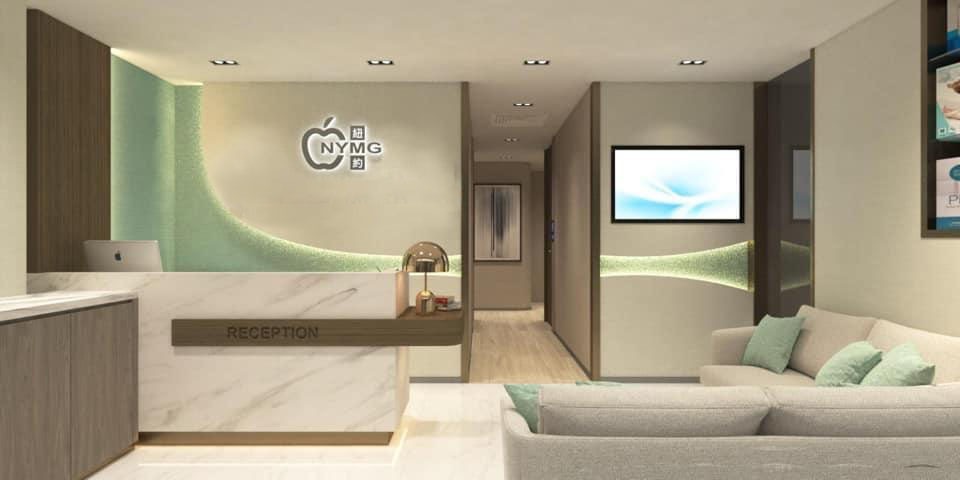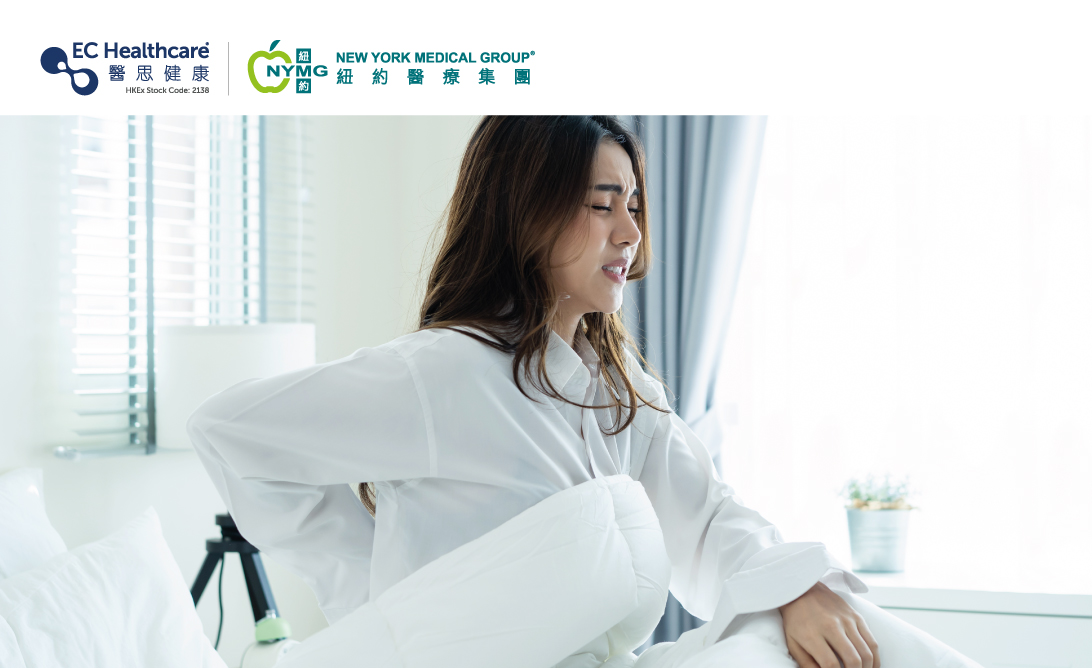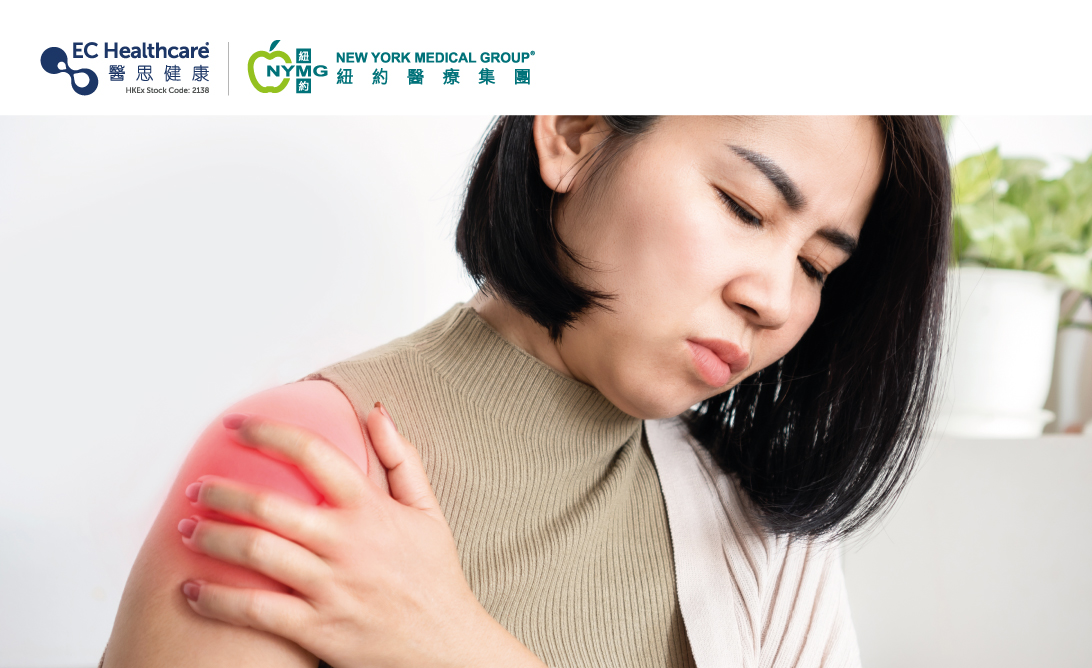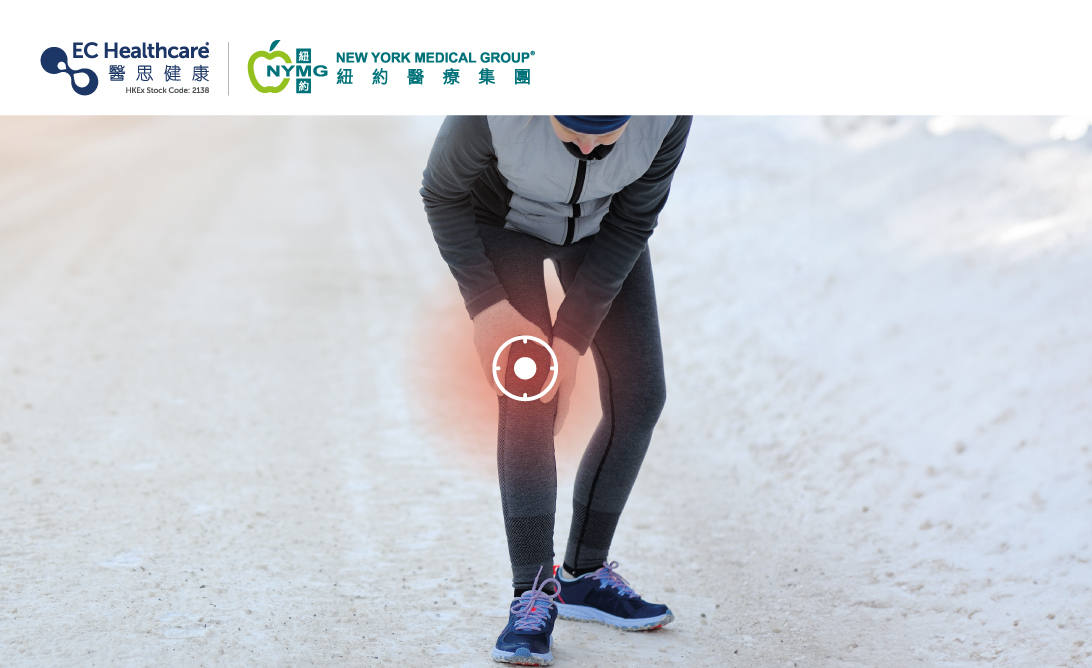Understanding the Causes of Lower Back Pain: Diagnosis and Treatment Methods
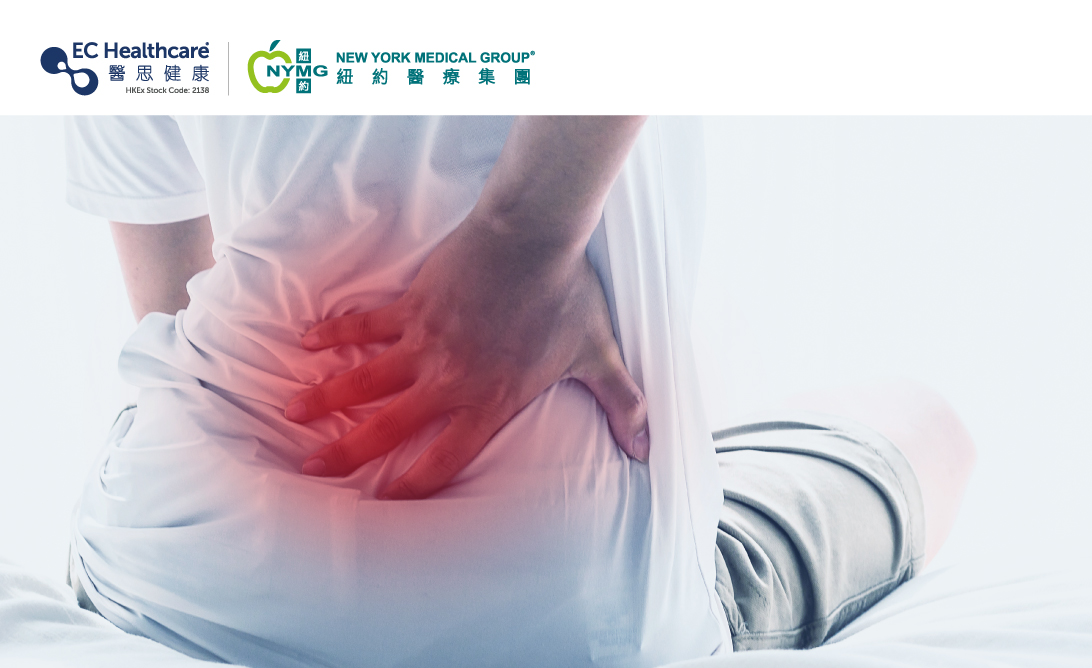

Lower back pain is a common condition among Hong Kong residents, often referred to as an urban ailment. Statistics indicate that nearly 80% of Hong Kong residents have experienced lower back pain at least once. Lower back pain typically refers to intense sensations of pain, stiffness, or spasms in the lumbar or thoracic region, extending from the ribs to the buttocks and even into the posterior thigh. The range of pain associated with lower back pain can vary. The spine plays a crucial role in lower back pain, as it is a vital structure that provides support, control, and protection for bodily movements, posture, flexibility, and mobility.
Our spine consists of 33 vertebrae, surrounded by ligaments, muscles, intervertebral discs, and nerve fibers. It extends from the cervical, thoracic, and lumbar regions to the sacrum and coccyx. Each vertebra contains a spinal canal, which protects the spinal cord within. The intervertebral discs play a crucial role in absorbing pressure and load, providing cushioning and shock absorption. Ligaments and muscles play a vital role in supporting and stabilizing the spine, facilitating coordinated movements of the body. Any dysfunction in the structures of the spine can potentially lead to lower back pain. In severe cases, it may result in symptoms such as stiffness, numbness in the legs, fatigue, herniated discs, or sciatic nerve pain.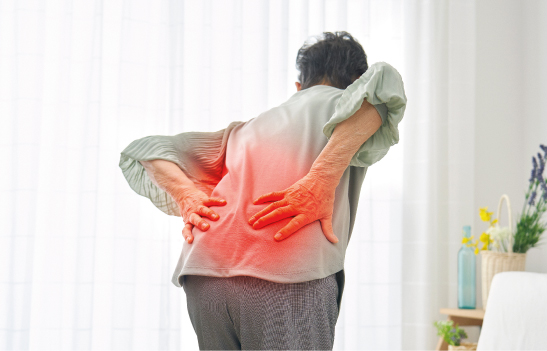
Lower Back Pain Symptoms
Lower back pain can be classified into two types: acute and chronic. Acute lower back pain often occurs suddenly and is commonly caused by muscle strain, improper posture, sprains, sports injuries, or issues with spinal structures. Typically, it lasts for a few days to several weeks. On the other hand, chronic lower back pain can result from long-term incorrect posture, cumulative injuries, aging, or chronic muscle strain. It leads to problems in the lumbar spine, vertebrae, and intervertebral discs, resulting in a lingering, subtle ache.
Acute vs. Chronic Lower Back Pain
• Symptoms of Acute Lower Back Pain
Acute lower back pain is characterized by a concentrated area of discomfort between the lumbar and sacral vertebrae. Patients often experience stiffness and sharp pain in the lower back and waist. Certain sudden movements, such as coughing or sneezing, can trigger intense stabbing pain in this region. Radiating pain, numbness, and weakness may be felt in the buttocks, back of the thigh, and down the leg. Tight and cramping back muscles can cause discomfort when standing or sitting, leading to constant adjustments in posture to alleviate pain. Acute lower back pain limits the individual's ability to perform certain activities, such as bending or lifting objects, as the stabbing sensation intensifies immediately and can immobilize them.
• Symptoms of Chronic Lower Back Pain
Chronic lower back pain is often a result of cumulative injuries. Unlike acute lower back pain, it is not characterized by sharp sensations. Instead, it manifests as a persistent, lingering, or dull ache that lasts for more than three months, and in some cases, even a lifetime. Individuals with chronic lower back pain may experience fatigue and weakness in their back muscles, affecting their ability to move their limbs. These symptoms restrict their daily activities such as walking or sitting. Individuals with chronic lower back pain often struggle with specific movements such as twisting, bending, or lifting, experiencing a significant increase in pain. Additionally, they may feel pressure in their back even while lying flat, particularly worsening during nighttime. Even light touches can evoke a sense of heaviness or discomfort, making it difficult to maintain a single position for an extended period.
Lower Back Pain Causes
There are various factors that can contribute to lower back pain, and it varies from person to person. Here are some common causes of lower back pain:
Acute Lower Back Pain Causes
Muscle spasms, overuse of back muscles, improper posture, spinal or intervertebral disc injuries, sprains, and accidents are common causes of acute lower back pain. Rapid movements can strain and stretch the muscles and ligaments responsible for protecting the spinal bones, leading to strains and tears. If the tendons or ligaments are shortened, the pain becomes more pronounced. Muscle spasms, characterized by excessive muscle tightness, can also limit mobility during physical activity and cause pain. Forceful twisting motions or external impacts can potentially result in compression fractures, spinal disc injuries, or protrusions, causing severe pain, numbness, or stabbing sensations when walking or bending, and even immobilization.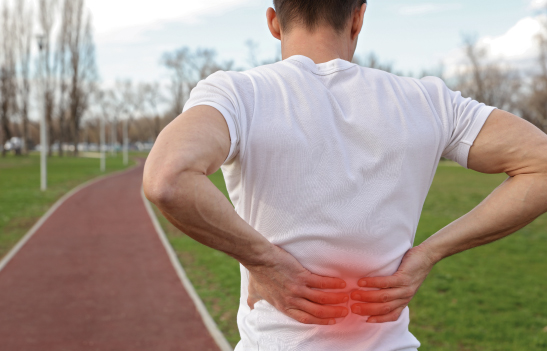
Chronic Lower Back Pain Causes
Chronic lower back pain is often associated with aging, long-term poor posture, muscle fatigue or tension, fasciitis, arthritis, osteoporosis, and congenital skeletal abnormalities. Prolonged periods of poor posture or frequent heavy lifting place increased pressure on the spinal bones, joints, and muscles, without adequate stretching. Over time, this can lead to the gradual degeneration of the lumbar spine, compression of the intervertebral discs, and compression of spinal nerves, resulting in back pain, muscle tightness, and stiffness in the lower back. In addition, older individuals may face issues with decreased bone density, making them more susceptible to vertebral fractures or compression fractures. This can severely limit their ability to stand, sit, or walk, causing intense pain with every movement. Furthermore, individuals with congenital or acquired spinal conditions such as spondylolysis, scoliosis, or bone spurs may experience functional impairments in the spine, such as incomplete closure or asymmetry. These conditions can restrict the range of motion in the spine, and even slight movements can trigger pain in affected areas.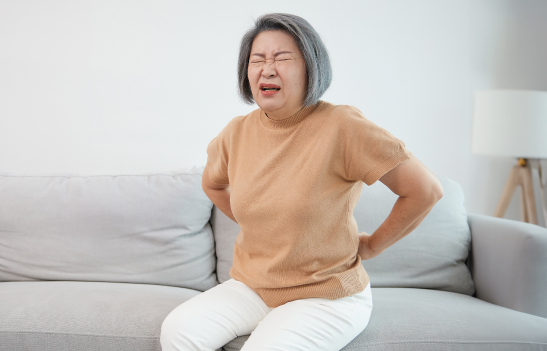
Other Factors Contributing to Lower Back Pain
Excessive obesity, pregnancy, lack of exercise, high stress levels, anxiety, aging, and underlying visceral diseases can also be factors contributing to the onset of lower back pain. The weight-bearing capacity of the spine is directly related to a person's body weight, and excessive obesity increases the pressure on the lumbar spine and back muscles. During pregnancy, weight gain and changes in body center of gravity cause the pelvis to tilt forward. Combined with hormonal changes, this can destabilize the lower back joints and ligaments, placing additional stress on the lumbar spine and pelvis, leading to muscle fatigue and extended pain. Prolonged lack of exercise and insufficient muscle mass, particularly weak abdominal muscles, along with the potential issue of osteoporosis associated with aging, can weaken the spine's support capability. Additionally, certain respiratory, kidney, pancreatic, and uterine conditions, as well as negative psychological factors such as anxiety, depression, and stress, may also contribute to lower back pain.
Who is More Prone to Experiencing Lower Back Pain?
Lower back pain can affect anyone, but individuals who engage in prolonged sitting or standing, repetitive lifting, or activities that require significant use of the lower back, such as office workers, drivers, construction workers, fitness enthusiasts, and athletes, are more susceptible to developing lower back pain. Additionally, individuals between the ages of 40 and 60, those with a sedentary lifestyle, and women who may have insufficient muscle mass or weaker spinal structures are at an increased risk of experiencing lower back pain.
Diagnosing Lower Back Pain
The human spine is a complex structure, and accurately diagnosing the cause of lower back pain requires a comprehensive and detailed examination. This typically involves a thorough medical history, physical examination by a chiropractor or physical therapist, and diagnostic imaging tests. In some cases, blood tests may be necessary to rule out other potential underlying conditions that could be causing the lower back pain.
The Process of Diagnosing Lower Back Pain by a Chiropractor/Physiotherapist
Typically, individuals seeking consultation will be asked to complete a personal medical history form, allowing the chiropractor or physiotherapist to gain initial insights into the patient's medical background, overall health, and lifestyle habits. The chiropractor will then diagnose the condition and identify the source of pain, primarily through specialized spinal manipulation and joint adjustment techniques. These methods are used to diagnose and treat the patient's condition. During the consultation, the chiropractor will conduct a visual and physical examination of the patient. This involves touching or pressing various parts of the body to assess the flexibility and sensitivity of the muscles and joints. Through analyzing the patient's posture and body alignment, the chiropractor can determine if there are any spinal abnormalities contributing to the pain. Some chiropractors may also arrange for a neurological assessment to evaluate the patient's sensory, motor, and reflex functions, testing the extent of nerve involvement. On the other hand, physiotherapists, based on the principles of physics, primarily utilize clinical examinations such as movement tests and standardized functional assessment tools to measure the patient's lumbar function and activity capabilities. They provide physiotherapy services to help improve the patient's condition.
Diagnostic Imaging Methods
Both chiropractors and physiotherapists may recommend diagnostic imaging tests such as X-rays, magnetic resonance imaging (MRI), or computed tomography (CT) scans to gain further insights into the spine-related information based on the individual's lower back pain condition. X-ray imaging can reveal any fractures, degeneration, or deformities in the spinal bone structure, but it has limitations in assessing the condition of the spinal soft tissues. MRI imaging provides a clearer view of the condition of the spinal bones, intervertebral discs, nerves, spinal cord, and surrounding soft tissues. On the other hand, advanced CT imaging can reveal the activity of lesions, aiding chiropractors or physiotherapists in determining whether the affected area is a new injury or an existing condition. It can also help assess the potential for cancer metastasis.
Diagnosing Lower Back Pain at the New York Spine and Physiotherapy Center
Upon arrival at the New York Spine and Physiotherapy Center, patients are required to complete personal medical history forms and pain assessment questionnaires. To ensure a clear understanding of the treatment process, an informational video about spinal physiotherapy is provided for patients to watch. Subsequently, a chiropractor or physiotherapist will conduct an in-depth consultation and physical examination, inquiring about the patient's previous injury records, overall health status, nature of pain, and its frequency and duration. During the physical examination, the spinal physiotherapist examines comprehensively the patient's spine, muscles, and soft tissue structures. Following the initial assessment, the physiotherapist will thoroughly explain the causes of pain and discomfort to the patient. If necessary, they may arrange for diagnostic imaging tests and discuss appropriate treatment methods accordingly.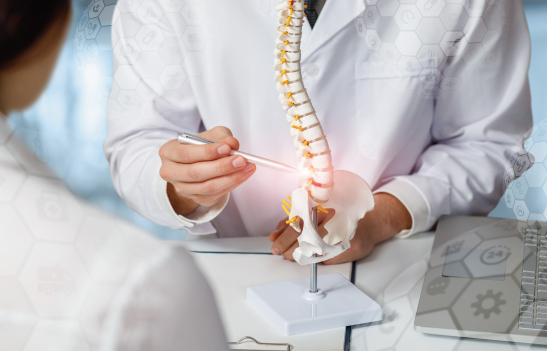
Treatment Options for Lower Back Pain
Mild lower back pain can often resolve on its own within a few weeks, and patients can engage in gentle stretching and soothing exercises to alleviate the discomfort. However, if the pain persists and begins to interfere with daily activities, it is advisable to seek professional treatment and advice as early as possible.
Non-Surgical Treatment Options
• Chiropractic Physiotherapy
Chiropractic physiotherapy offers drug-free and non-surgical treatments for spinal dysfunctions and pain. Techniques such as manual therapy, exercise therapy, spinal traction, and electrical stimulation utilizing advanced therapeutic devices are commonly utilized in chiropractic physiotherapy. Manual therapy involves joint manipulations, spinal traction, and spinal adjustments, aiming to improve the dynamics of the spine and joints, ultimately alleviating pain. Enhanced with advanced therapeutic devices, chiropractic physiotherapy can alleviate spinal pressure, reduce inflammation, and promote tissue repair, expediting the recovery process. Exercise therapy plays a pivotal role in chiropractic physical therapy, utilizing a series of specially designed and guided stretching exercises and movements. These exercises enhance the stability and strength of the muscles surrounding the spine, adjust posture and movements to their optimal alignment, not only improving spinal function but also reducing pain and preventing recurrence.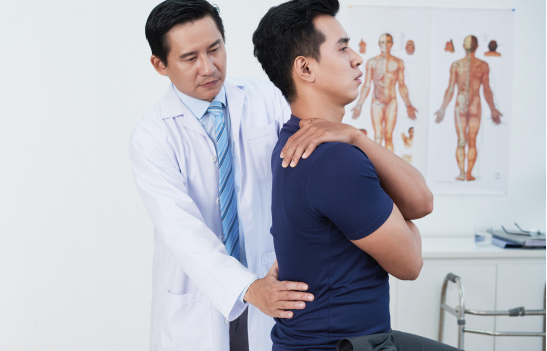
• MID Spinal Decompression Treatment
MID Spinal Decompression Treatment is a non-invasive traction decompression therapy that utilizes painless traction of the spine. With the aid of a precise sensing and computing system, the computer calculates the exact force required for traction at the affected area. It creates a small vacuum environment around the spinal bones, while simultaneously promoting hydration and enhancing blood circulation. The entire MID Spinal Decompression Treatment takes only 15 minutes and is painless with no side effects. Throughout the process, the interactive detection system of the device activates, adjusting the decompression program. After decompression, the dehydrated nucleus pulposus of the cartilage shrinks, creating a larger space within the spinal canal. This relieves pressure on the nerves, providing rapid and effective relief for compressed nerves and correcting disc protrusion. It accelerates the self-repair process of the intervertebral discs, improving pain and numbness symptoms.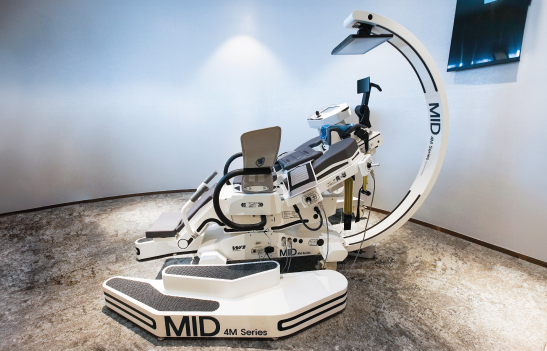
• SPINE MT 3D Spinal Decompression Treatment
SPINE MT 3D Spinal Decompression Treatment is another non-invasive traction decompression therapy that utilizes innovative 3D traction decompression technology. It employs dynamic motion to disperse nerve pressure, increase spinal gaps, reduce disc compression, adjust pelvic angles, strengthen deep muscles, and enhance joint flexibility. This decompression method shows remarkable efficacy in treating disc herniation, degenerative spinal joints, or scoliosis, effectively alleviating pain caused by nerve compression. It offers relief for lower back pain and sciatica symptoms. A spinal physiotherapist adjusts the device's gravitational angle and force according to the specific condition of the patient's spine to achieve optimal decompression results.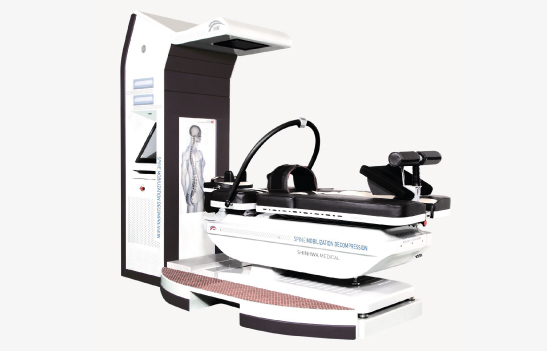
• Case Study
Woody Chung (鍾嘉朗), a basketball player, frequently experienced intense collisions during games. Years of playing basketball had taken a toll on his body, resulting in combination of new injuries and old issues, leading to persistent lower back pain. This pain not only affected Woody's daily life but also impacted his performance on the court. Seeking medical help, Woody turned to the New York Spinal and Physiotherapy Center, where he was diagnosed with lumbar disc herniation. Following the expert advice of the medical team, Woody decided to undergo the MID Spinal Decompression Treatment. After undergoing 3 to 4 sessions of the treatment, Woody's lower back stiffness eased, and his disc herniation issue was resolved, allowing him to resume his normal life pain-free.
Surgical Treatment:
In general, most cases of lower back pain do not require surgical intervention. Surgery is considered when non-surgical treatments fail to meet the patient's needs or for severe cases such as spinal stenosis. Data shows that only 5% of lower back pain patients require surgical treatment. Here are some surgical options for treating lower back pain: discectomy, spinal fusion, laminotomy, artificial disc replacement, and minimally invasive procedures specifically designed for lower back pain.
Rehabilitation Training:
Rehabilitation training is typically guided by physiotherapists or rehabilitation specialists. Its main focus is on strengthening the patient's core muscles and back muscles, stretching the back, improving spinal stability and support, teaching correct posture and body mechanics, and providing techniques to manage pain. The goal of this training is to help restore the patient's functional abilities. This type of training not only speeds up the patient's return to daily activities but also prevents overuse of back muscles, reduces spinal compression, and helps prevent further spinal damage or recurring lower back pain.
Lower Back Stretching Exercises for Pain Relief:
Lower back stretching exercises aim to alleviate lower back pain and increase flexibility in the area. Most of these stretches can also help relax the muscles of the lower back, even in the absence of pain. Here are some simple and effective stretching exercises for lower back pain relief. It's important for individuals with pain to ensure they have permission from a chiropractor or physiotherapist before attempting these exercises to avoid exacerbating their condition. Additionally, it's crucial to approach these exercises with caution, using a gentle, slow pace and maintaining proper form throughout.
【Basketball Player's Testimonial】Rescuing from Disc Herniation
Preventing Lower Back Pain:
Preventing lower back pain requires a multipronged approach that focuses on maintaining correct posture, strengthening the core muscles, and engaging in moderate exercise.
Daily Considerations and Work Posture
• Maintain proper sitting and standing posture
• When standing, engage your core and keep your gaze forward
• Maintain the natural curves of your spine
• Slightly bend your knees to distribute the weight evenly
• When standing or sitting, keep your feet shoulder-width apart and avoid turning them inward or outward
• Avoid slouching or hunching your back
• Avoid prolonged periods in the same static position
• Avoid excessive bending or twisting of the spine
• When sitting, ensure that your knees are at a 90-degree angle with the floor, and maintain good posture with your back and chair
• Avoid leaning forward with your body
• Use lumbar support cushions for your lower back and footrests to reduce joint pressure
• If using electronic devices, position the screen at eye level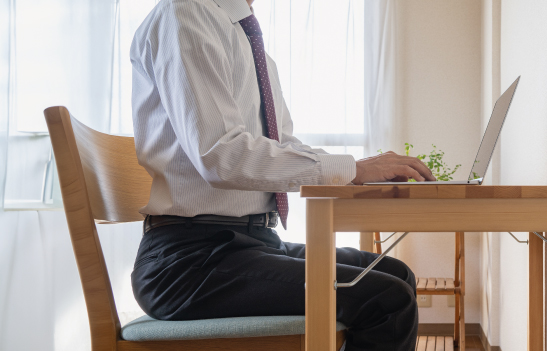
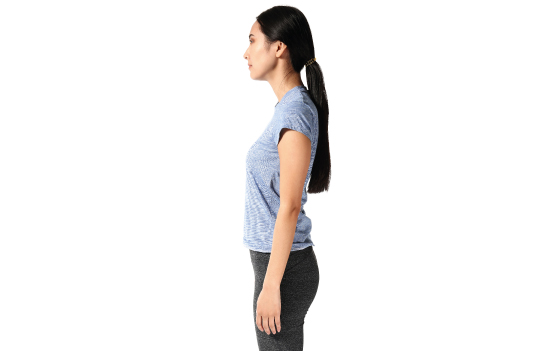
Proper Lifting and Carrying Techniques
• Assess the weight and size of the object beforehand. If it exceeds your capacity, use assistive tools or seek help from others
• Keep your body close to the object and maintain a straight back
• Bend your knees, keeping your feet parallel and shoulder-width apart
• Distribute the force evenly through your core, arms, and legs
• Avoid relying on your lower back to lift or carry the object
• Maintain stability and smooth movements while lifting or carrying
• Avoid sudden movements or twisting of the spine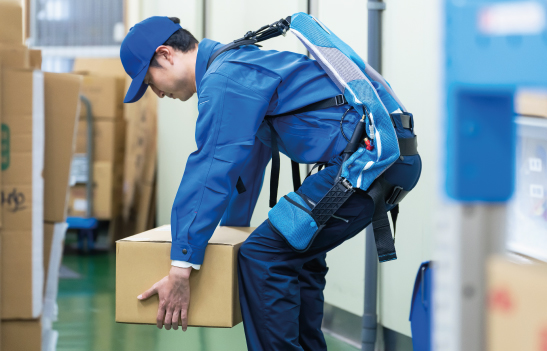
If your pain persists or worsens, it is crucial to promptly seek a spinal examination and treatment to identify the underlying cause of your discomfort.
Related Brands



